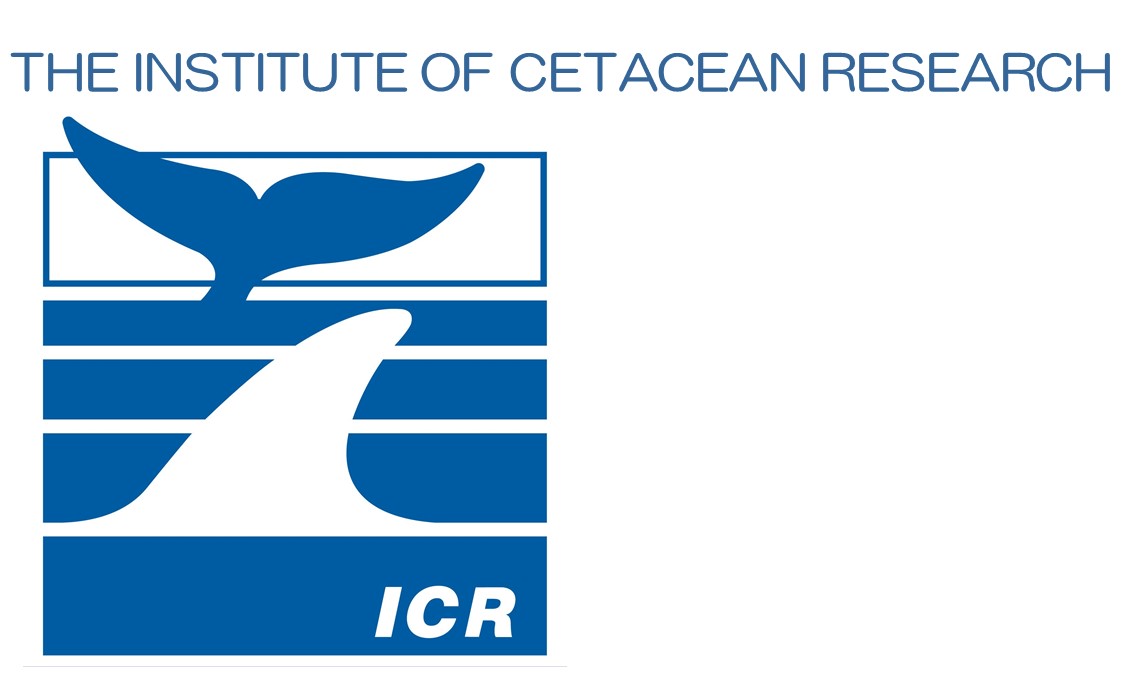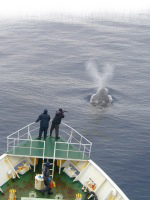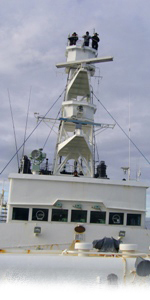2016 IWC/Japan Joint Cetacean Sighting Survey Cruise in the North Pacific - IWC-POWER
July 1, 2016
1. Background
The IWC/Japan Joint Cetacean Sighting Survey Cruise in the North Pacific (POWER) is a collaborative program started in 2010 after the conclusion of the International Whaling Commission Southern Ocean Whale and Ecosystem Research (IWC-SOWER) program carried out from 1996/1997 to 2009/2010 in the Antarctic.
In 2011 the IWC Scientific Committee annual meeting decided to name the new research program as the IWC-POWER (Pacific Ocean Whale Ecosystem Research). The POWER research program is appraised as an important component of the International Whaling Commission work. It is tasked by the IWC Scientific Committee and coordinated and directed by the IWC (http://iwc.int/power).
The IWC-SOWER program and its predecessor, the IDCR (International Decade for Cetacean Research, 1978/1979-1995/1996) were conducted in total for 32 consecutive years and made a huge contribution to estimating abundance of whale stocks distributing in the Antarctic, such as Antarctic minke whales, and elucidating the trends of whale stock abundance. Both IDCR and SOWER are recognized as the most successful international collaborative research effort conducted under the auspices of the IWC. Over the years, Japan has made a substantive contribution for the continuous implementation of these international whale research programs by providing research vessels and crew from the beginning to the end (http://iwc.int/sower). Following the IWC-SOWER, the POWER research cruises have been covering a wide area of the North Pacific that had not been surveyed for several decades since their beginning in 2010, sighting a large number of fin and sei whales and collecting many valuable data including biopsy samples. The research cruise this year enters its seventh year and will be carried out in accordance with a research plan based on specific tasks set forth by the IWC Scientific Committee.
2. Outline of the 2016 Research Cruise
The IWC-POWER program is conducted collaboratively by the International Whaling Commission and the Government of Japan. The IWC Scientific Committee has developed the research program and established the IWC-POWER Steering Group, which has a role of designing the research plan and analyze the results of the cruises. The Institute of Cetacean Research, under the commission of the Fisheries Agency of Japan, carries out the IWC-POWER cruises.
2.1 Objectives
(1) Estimation of Bryde's, sei and fin whales abundance (and other whale species where possible) in the North Pacific;
(2) Collection of information of stock structure, particularly biopsy samples and photo-identification data, with priority given to Bryde's, sei, fin, humpback and sperm whales in the North Pacific; and
(3) Collection of photo-identification data and biopsy samples for rare species encountered, especially North Pacific right whales and blue whales.
2.2 Research Cruise Period
From July 2, 2016 to August 30, 2016 (60 days).
2.3 Research Area
The research area is north of 20°N, south of 30°N and between 160°W and 135°W (High seas area and USA EEZ, Fig. 1).
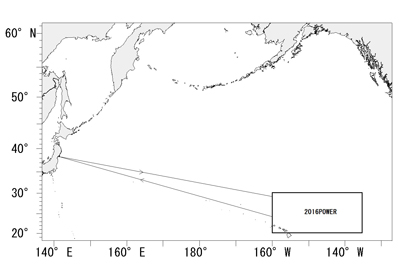
Fig. 1 The 2016 IWC-POWER research area.
2.4 International Researchers
IWC-POWER International researchers are nominated by the IWC Scientific Committee.
Koji Matsuoka (Cruise leader, Institute of Cetacean Research, Japan)
Jim Gilpatrick (South West Fisheries Science Center, NOAA/NMFS, USA)
Ji Hye Kim (Cetacean Research Institute, KOREA)
Isamu Yoshimura (IWC nominated international researcher, Japan)
2.5 Research Vessel
Yushin-maru No. 3 (742 ton, Kyodo Senpaku Ltd. vessel, Captain Hiroshi Eguchi, 17 crewmen).
2.6 Operating body
The Institute of Cetacean Research (Tokyo, Japan).
Photographs from the 2015 IWC-POWER cruise (last year)
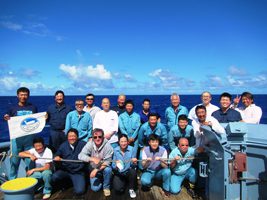
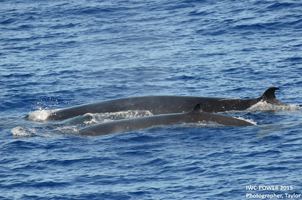
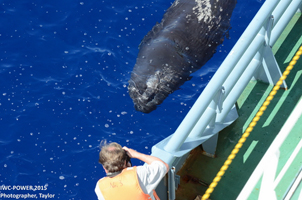

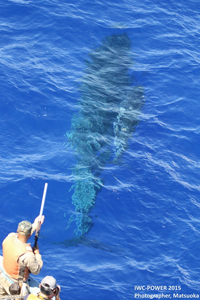
(from left)a) At the easternmost position (Northwestern Hawaiian Islands) b) Bryde's whale back and dorsal fin (Mother and calf pair) c) Calf of sperm whale d) Bryde's whale head and three ridges e) Biopsy experiment for a Bryde's whale using Larsen-gun system (Mother and calf pair)
